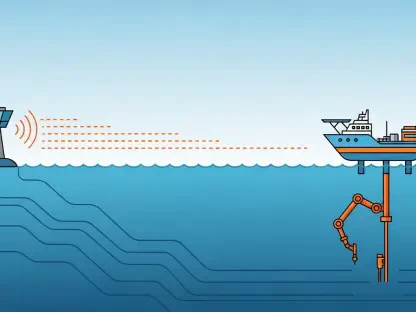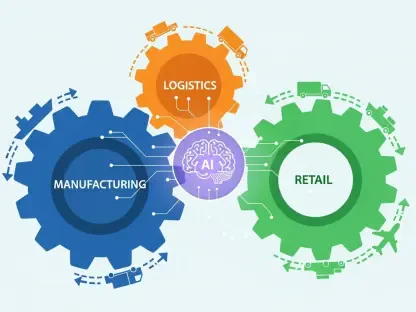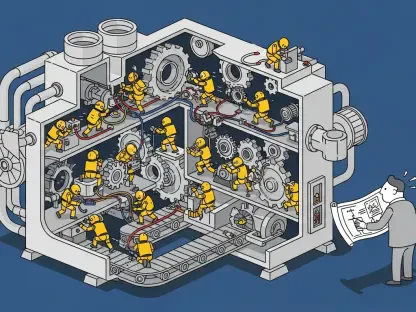OpenAI’s recently unleashed Sora Turbo is sparking intense interest in the burgeoning field of text-to-video (T2V) in generative AI applications and large language models (LLMs). This emergent technology holds immense potential, even if it is still very much a work-in-progress. Current capabilities are promising but quite basic; however, significant progress in the field is anticipated, heralding dramatic advancements that will hugely impact various industries, especially entertainment.
The Evolution of Generative AI: From Text to Video
Generative AI initially emerged by facilitating text-to-text (T2T) capabilities, enabling users to input text prompts and receive textual outputs in various forms like essays, poems, or narratives. Following this, generative AI expanded to text-to-image, where entered prompts yielded images ranging from photorealistic pictures to digital paintings and static cartoons. These applications are now well-established. The ambitious next frontier for AI researchers is the development of robust text-to-video generation capabilities.
The road ahead for T2V involves several developmental stages. Initially, efforts focus on generating video visually without audio. Gradual advancements aim to integrate synchronized audio with the video footage. Another key potential advancement is transforming single images or a combination of images and text prompts into dynamic video content. The ultimate goal envisaged for generative AI is the conversion of various input types—text, images, audio, and videos—into any specified output type, a goal often termed X-to-X modalities.
Introducing Sora Turbo: A New Milestone
The newly debuted Sora Turbo follows a limited release of an earlier iteration named Sora. The Sora Turbo is characterized as a ‘cousin’ of ChatGPT, one of OpenAI’s most successful creations. It is currently accessible exclusively to paying users of ChatGPT Plus and ChatGPT Pro, thus limiting its initial user base. Nonetheless, this release has garnered substantial attention due to the enormous existing active user base of ChatGPT, which stands at an estimated 300 million weekly users. The launch of Sora Turbo positions it as a formidable presence in the text-to-video market, potentially overshadowing competing products.
Sora Turbo allows the input of text prompts, images, and videos to generate video outputs. This step represents progress towards the aspirational X-to-X mode. Reviewing Sora Turbo indicates it has incorporated numerous advancements but still faces limitations typical in current T2V technologies. The limitations highlight the continuing necessity for refining and enhancing the system to achieve more accurate and detailed outputs that truly reflect user expectations.
Evaluating Sora Turbo’s Capabilities
Suitability or Faithfulness
Sora Turbo’s ability to generate videos that faithfully meet prompt specifications is relatively limited, earning a not-so-prominent C grade. The alignment between user expectations and AI-generated content is still developing, a common issue across the current T2V landscape. It’s difficult for AI to interpret prompts and render video content that matches user expectations precisely, as individual interpretations of a prompt might vary significantly. Users expecting highly detailed, accurate descriptions often find the outputs lacking nuance and precise alignment with their visions.
Visual Vividness, Quality, and Resolution
Sora Turbo shows significant improvements in these areas. Videos generated exhibit high resolution and visual fidelity, though not perfect, representing one of the more advanced states of T2V technology, thus rated at A-/B+. The visual quality of the videos is a testament to the progress made in generative AI, even if there is still room for enhancement. The clarity and detail in videos are commendable, positioning Sora Turbo ahead of many contemporaneous efforts in the realm of T2V.
Temporal Consistency
Consistency across frames over time is crucial. Early T2V outputs often showed erratic frame transitions, but recent efforts, including Sora Turbo, portray much better consistency. Nonetheless, there are occasional anomalies, justifying a B rating here. Ensuring smooth transitions between frames remains a key area for further development. Improved temporal consistency is vital for producing seamless and contiguous narratives that maintain viewer engagement across the video duration.
Object Permanence
In video sequences, maintaining the continuity of objects across frames is essential. Issues like abruptly disappearing props or characters are less prevalent but still occur, warranting a B-/C+ rating for Sora Turbo in object permanence. This aspect is critical for creating coherent and believable video content. Continuous advancements are required to refine this aspect, ensuring that objects within the scene remain stable and consistent throughout the video.
Scene Physics
Reflecting real-world physics in T2V outputs, especially when altered physical conditions are specified (e.g., reduced gravity on the Moon), is complex. Sora Turbo showcases moderate success, meriting a B-/C+ score. Accurately simulating physical interactions and environments is a challenging yet vital component of realistic video generation. The AI needs to better understand and replicate physics to produce believable interactions, which is crucial for realistic and immersive video outputs.
Feature Sets
Contemporary T2V offerings include various features, like stylistic options, remixing, timing controls, render speed, storyboarding, and more. Sora Turbo offers a rich set of such functionalities, considered to be around A-/B+, suggesting a well-rounded suite of tools for users. These features enhance the versatility and usability of the platform. Users can leverage these tools to fine-tune their video creations, adding layers of creativity and precision to the outputs.
Challenges and Limitations
OpenAI’s latest breakthrough, Sora Turbo, is generating significant buzz in the rapidly evolving realm of text-to-video (T2V) technology within generative AI and large language models (LLMs). This cutting-edge innovation, though still in its nascent stages, showcases tremendous potential. The current capabilities, while impressive, remain relatively basic. However, the industry is poised for substantial growth, and we can expect major advancements that are set to revolutionize various sectors. One area ripe for transformation is entertainment, where the ability to convert text into video could unlock new avenues of creativity and storytelling.
As we look closer, the implications of T2V technology extend beyond just entertainment. Education, marketing, and content creation are all fields that stand to benefit from these advancements. Imagine educational materials automatically transforming into engaging video content or marketing campaigns shifting to dynamic, personalized video ads. These possibilities demonstrate the power and versatility of T2V technology.
Developers and researchers are continually refining algorithms and models to enhance the precision and quality of T2V outputs. The ultimate goal is to create seamless, high-fidelity videos from text prompts, making the digital creation process more accessible and efficient.
In summary, OpenAI’s Sora Turbo represents a significant leap forward in the text-to-video domain. While still developing, its potential to redefine how we create and consume digital content is enormous, promising an exciting future for multiple industries.









